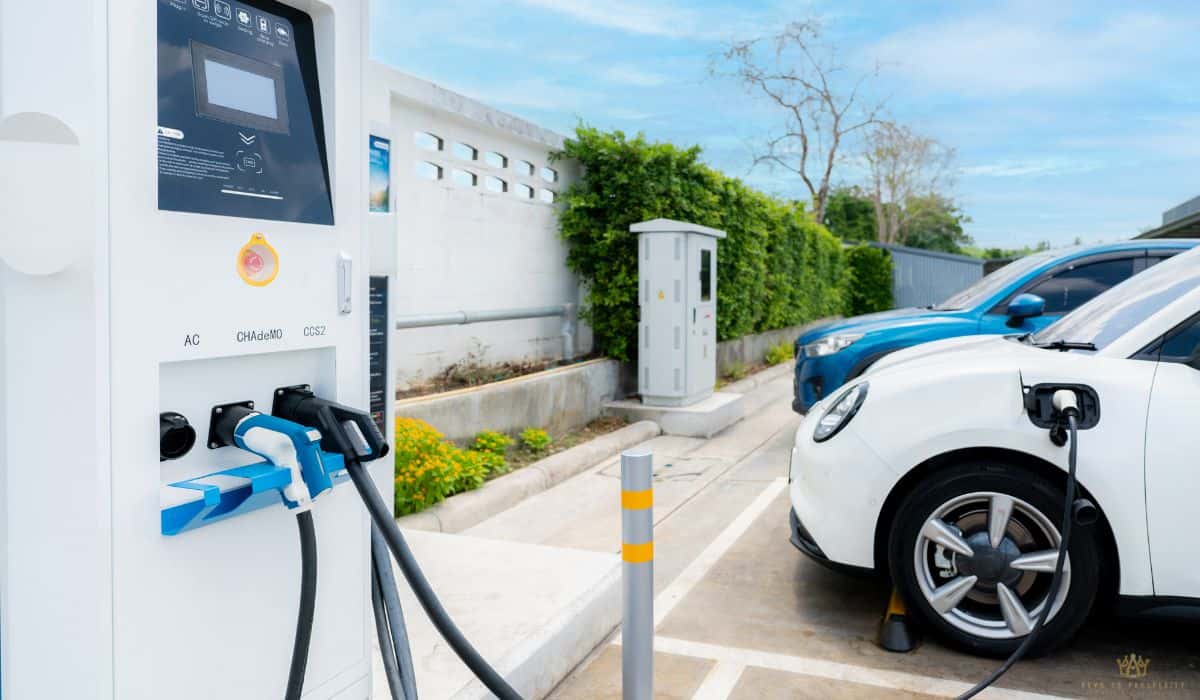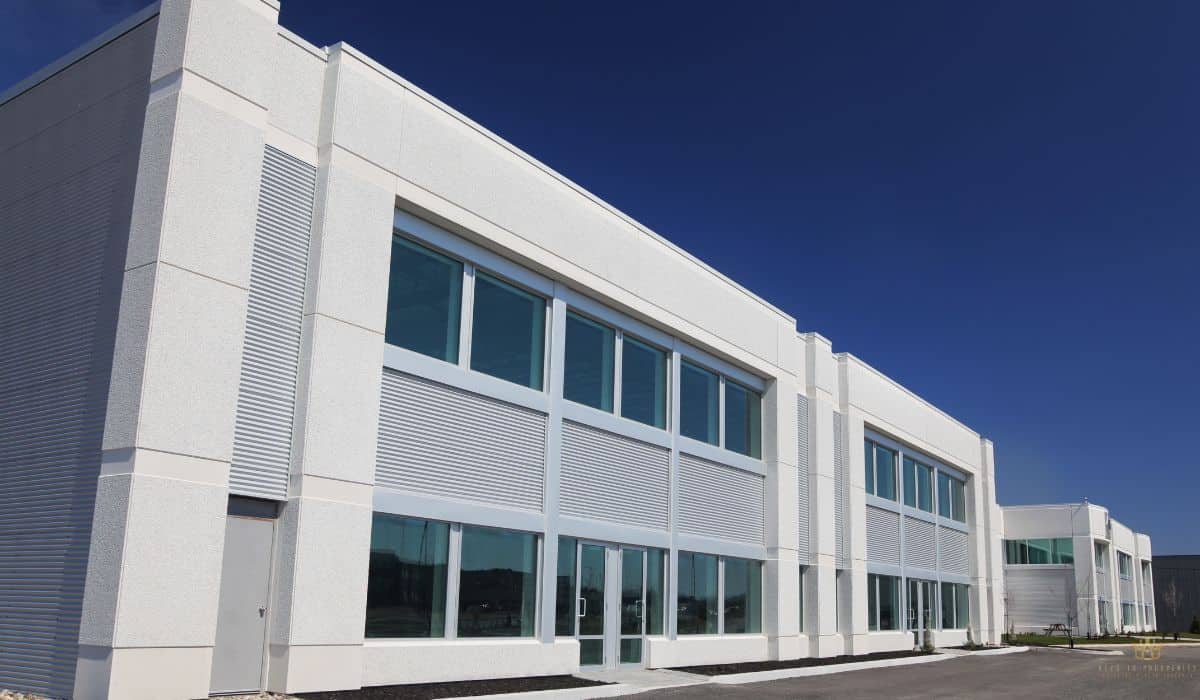
Nearly $45 billion flows through the commercial property remodeling sector in the US today, with tens of thousands of businesses transforming outdated spaces into profitable investments.
This massive industry underscores just how crucial value-add renovation planning in commercial real estate has become for investors seeking to maximize returns.
Value-add renovation planning in commercial real estate has become one of the smartest ways investors are increasing net operating income, improving tenant satisfaction, and driving property value higher in competitive markets.
From our experience working with commercial real estate investors and asset managers, one thing is clear: a well-executed value-add plan can transform a building’s performance, and fast!
If you’re looking for a deeper dive into a repositioning strategy for a commercial property, we covered that in our last article. Later, we’ll walk through value-add commercial properties so you can spot the winners before anyone else.
Check out also the article on value-add commercial real estate strategy. It’s the post that ties it all together.
In this guide, we’re breaking down the planning side of the equation. You’ll learn how to spot opportunities, build a detailed budget, work with the right property management team, and avoid the most common renovation pitfalls.
If you’re aiming to make smarter investment decisions, increase cash flow, and stand out in a crowded real estate market, you’re in the right place.
Short Summary
- The commercial property remodeling market is growing, with strong potential for investors focused on value-add renovation planning in commercial real estate.
- Value-add strategies focus on improving underperforming assets to increase net operating income and long-term property value.
- Success starts with identifying the right opportunities, analyzing tenant mix, comparable properties, and market trends.
- A solid renovation roadmap includes budgeting, financing, assembling the right team, and planning for compliance and projections.
- High-impact upgrades—like energy-efficient systems, tenant-focused features, and operational improvements—can directly increase cash flow and asset appreciation.
Understanding Value-Add Strategies In Commercial Real Estate Investment
Value-add commercial real estate strategy may sound like a buzzword, but it’s more than that. It’s a practical, results-driven approach that investors use to boost property value, increase cash flow, and build long-term equity.
In this section, we’re digging into what makes value-add work, how it ties into net operating income, and the top plays for 2025.
What Is A Value-Add Investment In Commercial Real Estate?
A value add investment means buying a commercial property that’s underperforming. Maybe rents are below market average, or the building needs cosmetic improvements.
The goal is to make strategic improvements that significantly enhance income and reduce operating expenses.
In some cases, we’ve seen investors take an older office property, modernize the lobby, install LED lighting, and increase rents by 20% within a year. That’s value-add in action.
How Improvements Drive Net Operating Income
Net operating income (NOI) is the difference between revenue and operating expenses. So, when we bump rents, cut costs, or boost tenant retention, NOI goes up, and so does property value.
Think about swapping outdated HVAC units with energy-efficient ones. That single upgrade lowers utility bills, improves energy efficiency, and increases NOI almost immediately.

Common Value-Add Strategies Across Property Types
Depending on the asset, the playbook changes. Here are a few approaches that tend to work well:
- Office buildings: Refresh outdated layouts, improve curb appeal, and upgrade shared amenities.
- Retail spaces: Bring in a better tenant mix, offer tenant improvement allowances, and improve signage.
- Multifamily or mixed-use: Add in-demand amenities like shared workspaces or EV charging stations.
In one example, an investor upgraded the facade of a tired retail center, added solar panels, and filled vacancies with trendy local shops. The new tenants attracted foot traffic, driving revenue up fast.
Market Trends Shaping Value-Add In 2025
Right now, economic uncertainty and shifting tenant demands are shaping the value-add landscape. In 2025, we’re seeing a major focus on:
- Tech-friendly commercial space with smart infrastructure
- Sustainable practices that reduce long-term project cost
- Flexible layouts to accommodate hybrid work trends
Market research and analyzing market conditions early in the value add process give us a competitive edge. The most successful value add investments happen when you plan for what tenants need tomorrow, and not just what they want today.
Identifying and Analyzing Value-Add Opportunities
Spotting a strong value add opportunity is knowing where to look and how to analyze what you find. Keep in mind: Luck has very little to do with it.
In this section, we’ll walk through real-world methods for identifying underperforming commercial real estate assets, evaluating potential, and using smart selection strategies to stay ahead of the pack.

Finding Underperforming Assets With Upside
Some of the best value add properties aren’t listed as bargains. You have to dig a little. Here’s where we usually start:
- Look for commercial real estate listings where rents fall below the market average. These tend to signal operational or management issues.
- Monitor aging office buildings or retail spaces in high-traffic areas. They may need upgrades to attract potential tenants.
- Explore expired listings or assets with long vacancy rates. These properties often suffer from poor marketing or deferred maintenance.
We’ve seen investors spot value in a property just because they noticed a lack of signage and low visibility on major listing platforms. Those small details matter.
Evaluating A Property’s Potential Vs. Purchase Price
Not every low-cost building is worth the effort. You need a clear framework to measure the upside relative to the purchase price.
- Compare current rents to updated comps after renovations.
- Calculate projected rental income with property improvements in place.
- Estimate unexpected costs, like costly repairs or construction delays, before finalizing your offer.
- Run the numbers with a detailed budget, and account for a 10–15% contingency.
Let’s say someone bought a commercial space for $2 million and expects to spend $500,000 on upgrades. If comps in the area show renovated spaces renting at $10 per square foot more, that might support a solid bump in cash flow.
Analyzing Tenant Mix And Market Factors
Smart value add renovation planning in commercial real estate means digging into the current tenant profile and broader market conditions.
- Review the tenant mix. Are there long-term anchor tenants or short-term leases?
- Compare with comparable properties in similar submarkets.
- Study market trends to predict demand shifts, like growth in hybrid workspace needs or demand for sustainable buildings.
One great example: An investor evaluating a strip center noticed surrounding businesses thriving, but the center itself had poor lighting and outdated signage. That meant opportunity.
Gaining A Competitive Edge In Property Selection
Want to stand out in a hot market? These strategies can help:
- Build relationships with real estate professionals who know local inventory before it hits the MLS.
- Use marketing materials and direct mail to approach off-market owners.
- Assemble a strong property management team and project manager early to move fast once a lead shows promise.
- Be flexible with financing. Bridge loans or creative terms can seal the deal faster than waiting on traditional bank loans.
At the end of the day, making informed decisions about the property’s potential comes down to combining good data with solid instincts and a well-organized team.

Value-Add Renovation Planning In Commercial Real Estate: Creating Your Roadmap
To get the most from a value-add commercial real estate strategy, you need more than a good eye for properties: you need a solid plan.
This section breaks down how to map out a renovation from start to finish, build a realistic budget, assemble the right team, and prepare for the expected (and the unexpected).
Step-by-Step Planning: From Acquisition to Project Completion
Having a clear roadmap avoids last-minute panic and budget overruns. Here’s a simple way to structure the process:
Step 1. Pre-purchase: Confirm property condition, identify improvement areas, and research zoning or use restrictions.
Step 2. Due diligence: Line up inspections, environmental reports, and review the lease situation.
Step 3. Design and permits: Finalize renovation scope and submit plans to city officials for approvals.
Step 4. Construction and project oversight: Work closely with a project manager to monitor quality, timeline, and contractor progress.
Step 5. Stabilization: Lease-up renovated space, refine operations, and prepare for long-term hold or resale.
Skipping the permit prep phase can delay construction by months and increase holding costs. So remember to always pad your timeline.
Budgeting For Real Life, Not Just The Spreadsheet
It’s easy to underestimate project costs, especially if you’re relying on generic estimates. Here’s how to keep it tight but accurate:
- Include contingencies of 10–15% for unknowns like structural surprises or supply chain hiccups.
- Break out soft costs: architecture fees, city fees, and holding costs while the property’s vacant.
- Allocate for tenant improvements and marketing if you’re leasing post-renovation.
One investor had a flawless interior design plan, except they didn’t account for utility upgrades required by code. That mistake blew a $90k hole in their budget.
Strategic Financing & Assembling The Right Team
Funding the project right from the start keeps momentum strong. You’ll want to:
- Explore bridge loans, private equity, or partnerships to reduce personal risk.
- Choose contractors and vendors early—before you close—so you’re not scrambling later.
- Hire a commercial property manager with construction oversight experience to watch every dollar.
Keep your lender in the loop. One group we advised ran into issues because they didn’t update their lender on scope changes. That stalled the next funding tranche.
Compliance And Financial Projections That Hold Water
Before demo starts, make sure your ducks are in a row legally and financially:
- Verify ADA, fire code, and energy compliance. Requirements vary by state and use.
- Use historical rental income data and market research to project realistic returns.
- Stress-test your financial projections with conservative lease-up rates and rent increases.
A strong value-add renovation planning in commercial real estate project hinges on anticipating challenges, budgeting smart, and assembling a team that knows how to execute. That’s what turns a decent deal into a standout performer.
High-Impact Renovation Strategies That Maximize Returns
Smart renovations can do more than just update a space. They can unlock serious upside. When done right, improvements not only raise rental income but also help control costs and improve tenant satisfaction.
Below are strategies we’ve seen work across different types of value-add commercial real estate projects.
Property Improvements That Boost Income
The first thing we usually analyze is how each upgrade will affect cash flow. Cosmetic updates are great, but they need to move the needle.
- Convert underused common areas into leasable square footage.
- Add amenities like shared conference rooms or bike storage to justify higher rents.
- Modernize facades or lobbies in older buildings to improve curb appeal and leasing velocity.
One example: a retail strip center that added outdoor seating and LED signage leased up faster, and at 18% above projected rents.

Sustainable Upgrades That Lower Costs
Eco-friendly doesn’t have to mean expensive. Efficient systems often pay for themselves.
- Upgrade HVAC units, lighting, and insulation to slash utility bills.
- Install low-flow plumbing fixtures and ENERGY STAR-rated appliances.
- Look into solar panels or cool roofing for long-term operating expense relief.
In one renovation playbook we studied, switching to LED lighting saved over $12,000 per year in energy costs for a small office building.
Enhancements That Keep Tenants Around
Keeping tenants happy is just good business. Longer leases mean fewer turnovers and steadier income.
- Improve security features. Think better lighting, access control, or cameras.
- Refresh shared spaces like lobbies, restrooms, and parking areas.
- Offer tech perks like smart access or fast Wi-Fi in common areas.
For example, a mixed-use complex added a tenant lounge with free coffee and high-speed internet. Retention improved by 22% over 12 months.
Operational Upgrades That Add Value
Sometimes the biggest returns come from behind the scenes.
- Add smart building systems for maintenance alerts and energy tracking.
- Streamline vendor contracts for landscaping, cleaning, and security services.
- Integrate software for leasing, billing, and communication with tenants.
Every dollar saved through efficiency increases net operating income, which directly raises the property’s appraised value. In short, these high-impact renovation strategies aren’t just smart. They’re essential in today’s value-add renovation planning in commercial real estate.
Final Thoughts
Getting a value-add commercial real estate strategy off the ground takes planning, solid analysis, and the right team, but it’s worth the effort. Renovations done with purpose can boost income, trim expenses, and increase a property’s long-term value.
If you’re building your next repositioning strategy for a commercial property or just learning how to identify value-add commercial properties, stick with what works and keep learning from real examples.
Want more insights like this? Head over to our homepage and see how we break down every step of the process in plain language.
Frequently Asked Questions
What Is A Value-Add Strategy In Commercial Real Estate?
A value-add strategy involves acquiring properties that have potential for improvement, then increasing their value through renovations, management changes, or operational upgrades. The goal is to boost income and property value over time.
How Do You Know If A Property Is A Good Value-Add Opportunity?
Start by looking at occupancy rates, rent gaps, deferred maintenance, and tenant demand in the area. Compare the property’s current performance with nearby assets to spot areas for improvement.
What Types Of Renovations Have The Highest Roi?
Upgrades that reduce energy costs, enhance tenant comfort, or improve curb appeal often yield strong returns. Think updated HVAC systems, common area remodels, or tech-friendly workspaces.
Can Value-Add Renovations Work For All Commercial Property Types?
Yes, but strategies will vary. Office buildings might need layout reworks or Wi-Fi upgrades, while retail properties could benefit from rebranding or anchor tenant shifts.






